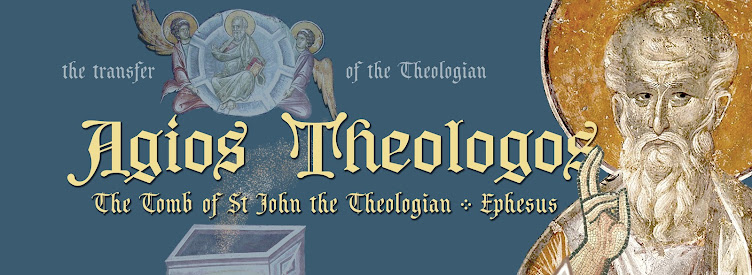The
road from Serbia to Ephesus winds through Bulgaria, from which one enters into
the European part of Turkey (Eastern Thrace).
From there one goes down to the Gallipoli peninsula, to Eceabat, where
one can take a ferry across the Dardanelles, leaving Europe. One then disembarks on the shores of Asia
Minor in the town of Çannakale.
The final road winds along the lovely coast
of the Aegean Sea, passing ancient Troy, Pergamum and Smyrna, to the holy,
divinely chosen city of Ephesus, 1,300 km from Belgrade.
Ephesus
is more or less familiar to us as the most significant Attic city of Asia Minor.
It was adorned with one of the seven wonders of the world, a magnificent pagan
temple of the goddess Artemis. History
tells us that the Ionians, one of the four Hellenic tribes, founded it in the
10th century BC.
An
important maritime and trade center which connected the east and west, it
played an even greater role as a center of Greco-Roman culture, sciences and
arts. We know that Ephesus and the surrounding regions gave birth to Herodotus the
father of history, Homer, the greatest Hellenic poet, Pythagoras, the father of
math and geometry, Hippocrates the father of medicine, and the philosopher
Heraclites, among others.
Just
as Ephesus was considered to be the cradle of Attic civilization during the
pagan period, so during the Christian period did it earn the title of “the
second province of God after Jerusalem.”
During
the first three centuries AD Ephesus was the main center of Christianity in
Asia Minor. Over the period of the
establishment of the Church, the Ephesus metropolis was one of the highest in
rank as an apostolic seat, i.e., a church which one of the Apostles themselves had
founded. It was independent and autocephalous, enjoying the same rights and
privileges of a ruling bishopric or higher metropolis (later to become a
patriarchate) on the level of the metropolis of Rome, Alexandria and Antioch.
The sixth canon of the First Ecumenical Council in Nicea (AD 325), confirms the
already-established tradition that Ephesus had the rights and privileges of a
first hierarchy over the entire “eparchy” or civil territory (proconsulate) of
Asia with its eleven ecclesiastical provinces.
The second canon of the Second Ecumenical Council in Constantinople (AD 381)
confirmed Ephesus’ jurisdictional authority.
With
the rise of Constantinople, the Second Rome, as the royal city and capital of
the Eastern Roman Empire, the above-mentioned rights of Ephesus shrunk
significantly. Revising the third canon
of the Second Ecumenical Council, (AD 381), the twenty-eighth canon of the
Fourth Ecumenical Council in Chalcedon (AD 451), declared that “The bishop of
Constantinople must take precedence after the bishop of Rome, for
Constantinople is the New Rome,” putting all the churches of Asia Minor,
including Ephesus, under the patriarchate of Constantinople.
What
makes Ephesus stand out from the rest of the apostolic bishoprics is the fact
that it was the lot of the Holy Apostle and Evangelist John the Theologian. It
was his apostolic cathedra and the place of residence for most of his
long life which he shared with Our Most Pure Theotokos. It was in Ephesus that he wrote his famous
gospel and three catholic epistles. It
is also the site of his mysterious burial, at which took place the even greater
mystery, his remaining in life until the Second Coming of Christ, fulfilling
the words of the Lord (Jn. 21:23). According to Revelations 10:11, it is also
the place from which St John the Theologian will begin his second preaching
during the reign of Antichrist. For all of these reasons, the formerly Attic
Ephesus became synonymous with the person and labors of the beloved disciple of
the Lord. During the Byzantine period it was even renamed in St John’s honor.
Ephesus
is also mentioned as the first of the seven churches of Asia in the Apocalypse
(Revelation) in St John the Theologian’s vision on the island of Patmos.
During a session of the Third Ecumenical Council which was held in Ephesus against the heretic Nestorius, Bishop Theodotus of Ancyra (Ankara, capital of modern Turkey) formulated one of the most beautiful lauds of the city:
“Here in Ephesus, Our Lord Jesus Christ set before us as our instructor John, son of thunder, which is a great gift from God for this Ephesian metropolis, and indeed a treasure for the whole world, for St John in a single sentence expressed the entire essence of our faith: ‘The Word became flesh’ (Jn 1:14).”
One
anonymous pilgrim to Ephesus noted,“Aside from the Holy Land, I cannot imagine
any other place on earth than here where one could be closer to Our Most Pure
Lady and the founders of our holy Christian faith.”


No comments:
Post a Comment